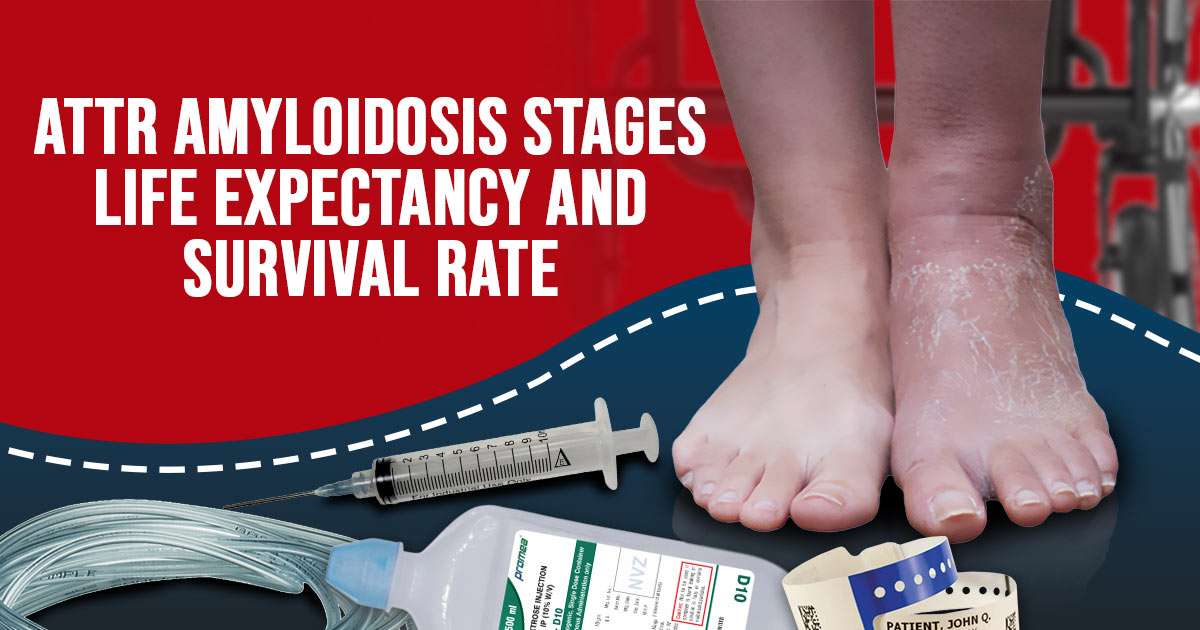ATTR Amyloidosis Stages: Life Expectancy and Survival Rate

The outlook for people with ATTR amyloidosis varies based on the type or stages of ATTR amyloidosis they have, which organs are affected, and their treatment. In amyloidosis, abnormal proteins misfold and form clumps called amyloid fibrils, which can build up in tissues and organs, causing them to malfunction. ATTR amyloidosis, or transthyretin amyloidosis, involves a protein made in the liver that clumps together and may accumulate in the nerves, heart, or other body parts, potentially leading to serious organ failure. This condition can impact life expectancy and survival rates, which depend on various factors, including treatment options.
Life Expectancy After ATTR Amyloidosis Diagnosis
Life expectancy and survival rates for people with ATTR amyloidosis depend on the type they have: familial or wild-type. Familial ATTR amyloidosis patients typically live 7 to 12 years after diagnosis, while those with wild-type amyloidosis live about 4 years, with a 5-year survival rate of 36%. The disease often leads to amyloid fibrils building up in the heart, causing dangerous heart rhythms and heart failure. There’s no cure, but early diagnosis and treatment can help slow the disease’s progression.
Factors that May Affect the Chances of Survival
Several things can influence how long people with ATTR amyloidosis live, such as:
- The type of ATTR amyloidosis they have
- The organs that are affected
- When the symptoms started
- How soon will treatment begin?
- The kinds of treatments used
- Their overall health
We need more research to understand how different treatments impact survival and life expectancy for people with this condition.
Types of ATTR Amyloidosis
The type of ATTR amyloidosis you have affects your long-term outlook. If you’re unsure of your type, ask your doctor. The main types are familial and wild-type. Other amyloidosis types can also occur when different proteins form amyloid fibrils.
Wild-type ATTR amyloidosis
Wild-type ATTR amyloidosis isn’t caused by genetic mutations but develops with age. As people get older, TTR becomes less stable and forms amyloid fibrils, usually in the heart. This type mainly affects men over 75 years old.
Familial ATTR amyloidosis
Familial ATTR amyloidosis, or hereditary ATTR amyloidosis, is caused by genetic mutations passed from parent to child. These mutations make TTR proteins less stable, increasing the chance they will form amyloid fibrils. Different mutations can affect the nerves, heart, or both. Symptoms usually start in adulthood and worsen over time.
Other Types of Amyloidosis
There are also other types of amyloidosis, like AL and AA amyloidosis, which involve different proteins than ATTR amyloidosis.
AL amyloidosis, or primary amyloidosis, involves abnormal antibody parts called light chains. If AL amyloidosis is found late, the outlook is often poor. Median survival for stage 4 AL amyloidosis can be just 5 months, with most deaths caused by infections or heart and liver failure.
AA amyloidosis, also known as secondary amyloidosis, involves a protein called serum amyloid A. It usually starts because of an infection or an inflammatory disease like rheumatoid arthritis.
Treatment for ATTR Amyloidosis
If you have ATTR amyloidosis, your treatment plan from the doctor will depend on your specific type, which organs are affected, and the symptoms you experience. They might suggest:
- A liver transplant for some cases of familial ATTR amyloidosis
- Medications like ATTR silencers reduce TTR production in familial cases
- Medications like ATTR stabilizers to prevent TTR from forming amyloid fibrils in both familial and wild-type cases
Your doctor might also recommend other treatments to manage symptoms and complications, like dietary changes, diuretics, or heart surgery. Researchers are also studying new treatments in clinical trials, including drugs to clear amyloid fibrils from the body.
Understand the Life Expectancy for Amyloidosis for Proactive Healing
If you have ATTR amyloidosis, it’s important to discuss treatment and outlook with your doctor. Early diagnosis and treatment can slow down the disease, ease symptoms, and improve life expectancy. The treatment plan your doctor suggests will depend on your specific type of disorder and which organs are involved. There may be new treatments in the future to help improve survival and quality of life. Your doctor can keep you updated on the latest developments.

